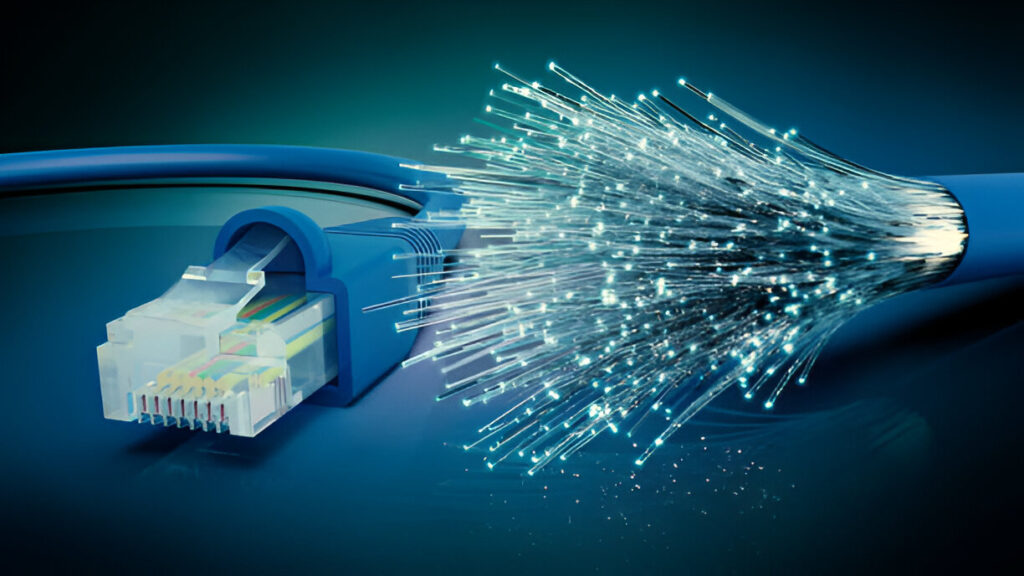Choosing the right internet connection for your home or business is crucial to ensure a seamless online experience. Fiber and cable internet are two of the most popular options available, but each comes with its own set of advantages and limitations. In this article, we’ll explore both fiber and cable internet to help you determine which one is better suited for your needs.
What is Fiber Internet?
Fiber internet uses fiber-optic cables that transmit data through light signals. These cables are made of thin glass fibers and offer the fastest and most reliable internet connection available today.
Advantages of Fiber Internet
- Superfast Speeds: Fiber internet offers speeds ranging from 100 Mbps to 1 Gbps or higher. This makes it ideal for households with heavy internet usage, such as streaming, gaming, or working from home.
- Symmetrical Upload and Download Speeds: With fiber, you get equal upload and download speeds, which is beneficial for video conferencing, uploading large files, or online gaming.
- High Reliability: Fiber is less susceptible to weather conditions and electrical interference, providing more consistent and reliable service.
- Future-Proof Technology: As demand for faster internet continues to grow, fiber infrastructure is designed to handle the increasing bandwidth requirements.
Disadvantages of Fiber Internet
- Limited Availability: Fiber internet is still not available in many rural and suburban areas, as the infrastructure is expensive to install.
- Higher Cost: The installation and service fees for fiber internet can be more expensive compared to cable internet, though prices have been dropping as the technology becomes more widespread.
What is Cable Internet?
Cable internet relies on the same coaxial cables that deliver cable television services. It’s a more widely available option that offers fast internet speeds, though generally slower than fiber.
Advantages of Cable Internet
- Widespread Availability: Cable internet is more commonly available in most areas, especially in suburban and rural regions, making it a viable option for most households.
- Faster Than DSL: Cable internet is typically faster than DSL connections, with speeds ranging from 10 Mbps to 500 Mbps, which can easily support everyday online activities like streaming and gaming.
- Affordable: Cable internet plans tend to be more affordable than fiber, making it a cost-effective choice for households with moderate internet needs.
Disadvantages of Cable Internet
- Slower Upload Speeds: Cable internet often has slower upload speeds compared to download speeds. This may affect users who frequently upload large files or stream content.
- Shared Bandwidth: Cable internet connections are shared among users in a neighborhood, meaning internet speeds can slow down during peak usage times.
- Prone to Interference: Coaxial cables can be affected by electromagnetic interference and adverse weather conditions, which can cause disruptions in service.
Speed Comparison: Fiber vs. Cable
When it comes to speed, fiber is the clear winner. With fiber internet, users can experience speeds up to 1 Gbps or higher, while cable internet typically tops out at around 500 Mbps. For households with multiple users streaming 4K content, gaming, or working remotely, fiber’s faster speeds provide a superior experience.
Cable internet, while not as fast, still offers more than enough speed for most users’ needs. For light to moderate internet users, the difference in speed may not be as noticeable, making cable a viable and cost-effective option.
Reliability: Fiber vs. Cable
Fiber internet is considered more reliable because it uses light signals that are less prone to interference from weather or electrical equipment. Fiber cables are also more durable and less likely to degrade over time.
On the other hand, cable internet can experience slower speeds and outages due to shared connections and environmental factors like weather or electrical interference. While cable is still fairly reliable, it may not provide the same level of consistency as fiber.
Cost Comparison: Fiber vs. Cable
Fiber internet is often more expensive to install and subscribe to, but prices are becoming more competitive as the technology becomes more widely available. For budget-conscious consumers, cable internet offers a more affordable solution while still delivering solid performance.
It’s worth noting that while fiber may have a higher upfront cost, the long-term benefits of faster speeds and better reliability may make it a better investment for households with high internet usage.
Which One Should You Choose?
Choosing between fiber and cable internet depends on your location, budget, and internet usage. If you have access to fiber and can afford the slightly higher cost, it’s the better option for speed, reliability, and future-proofing your home or business. Fiber is especially beneficial for users who require symmetrical speeds, such as those who work from home, stream content, or engage in online gaming.
If fiber is not available in your area or you’re looking for a more budget-friendly option, cable internet can still provide fast speeds and reliable service for most users. It’s a great choice for light to moderate internet users who don’t need the ultra-high speeds that fiber offers.
Conclusion
Both fiber and cable internet have their own unique benefits, and the right choice depends on your specific needs. Fiber is the clear leader in terms of speed and reliability, but it comes at a higher cost and may not be available everywhere. Cable internet, while slower and more prone to interference, offers widespread availability and affordability, making it a solid choice for many households. Evaluate your internet usage and location to make the best decision for your connectivity needs.
